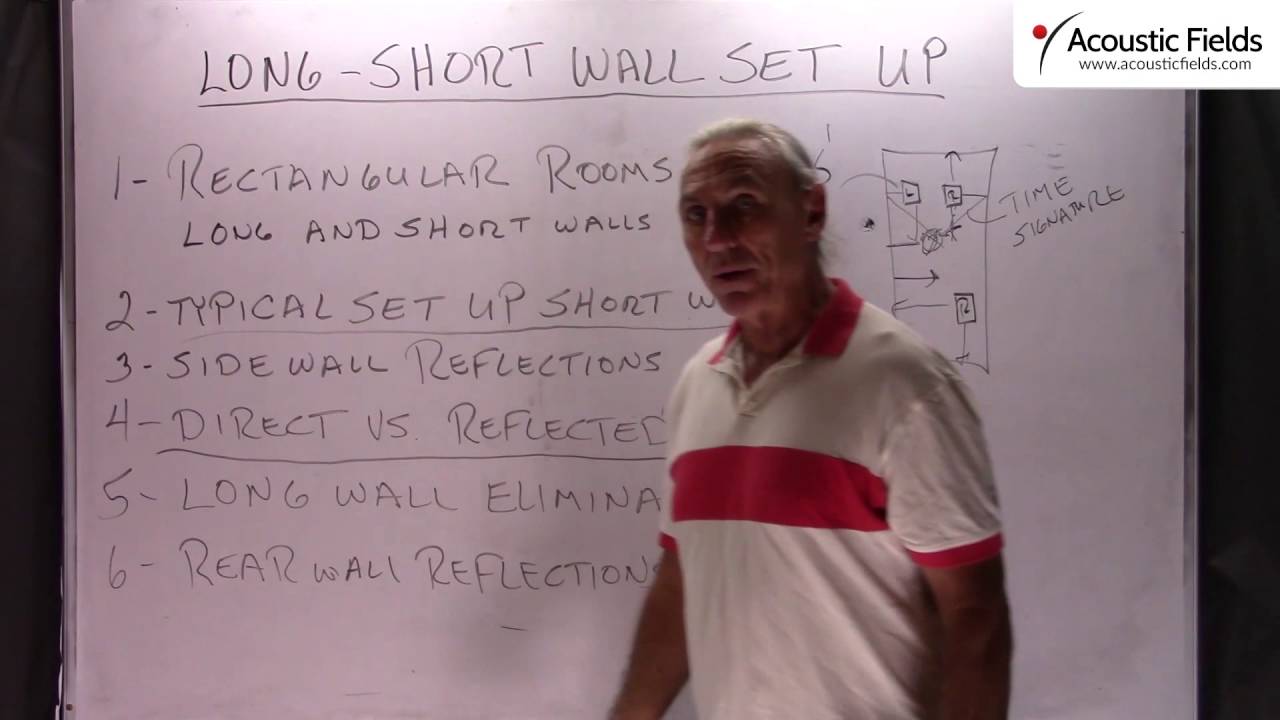Today we’re going to talk about the long and short wall setup in rectangular rooms. Most people set up on the short wall, rectangular room, they put their left and their right channels here. You can also set up on the long wall, so let’s look at both situations and see what the differences are. Obviously with the short wall we’re going to have shorter side wall distances so we’re going to have energy reflecting off the side walls at the listening or monitoring position.
So this time signature has to be managed correctly because we all know that the balance between the reflected and the direct energy from our speakers is critical in image, focus, definition and all the other variables that we have to deal with. So the typical setup is on the short wall people like to fire the speakers down the long lengths of the rectangular room which is fine as long as you have some minimum distances here. Minimum distance is 4 to 5 feet. Let’s keep that in mind.
Obviously with a longer setup here, we have bigger distances for our side wall reflections which is good because it’s less time-domain signatures that we have to manage through absorption or diffusion. But then in rectangular rooms the long wall setup presents another setup issues because then we shorten the distance from the listening position to the rear wall. So it’s kind of 6 to one and half a dozen of the other as they used to say back many years ago. So it just depends on what you’re trying to accomplish. Obviously it depends on your distances and volume of the room.
So both can work for you. But it’s always this direct versus reflected energy paradigm that we have to keep in focus. So short wall setups, smaller side wall distances more need for a time domain reflection management. Long wall setup less of a distance on the side walls but then the rear wall in this case comes into play and then we have to treat the rear wall because we don’t want that energy coming back on.
So it’s kind of a balancing act, it depends on what your objective is, always usage, what you’re trying to do in the room and the distances that we have to work with. If we set up long ways on a rectangular room then our diffusion if that’s what we’re going to use for this treatment must have enough distance to work with. So it’s a balancing act. It’s no right, no wrong, you just have to match the usage with what you’re trying to accomplish.








Hi Dennis.
We’re buying a house and I intend to close in a basement room for my studio. The ceilings will be typically low (7 1/2 after drop ceiling). I know that is far from a best case (I’ve been producing and engineering for 40 yrs!) but it’s all I’ve got. I suspect I would have a room maybe 12 by 18 by 7 1/2
So, knowing that I might run into a significant bass issue I wondered about your take on Helmholtz resonators. I will only be using near-field monitors and mostly at lower volumes. I would track some vocals and acoustic instruments in te same room.
Thanks for any response.
Tim Norris
Hi Tim, Helhholtz resonators are frequency specific with small bandwidths. There is no need for them when you have broadband diaphragmatic absorption. Go to this link and fill out the information. Lets take a look at your room size, volume, usage. https://www.acousticfields.com/free-room-analysis